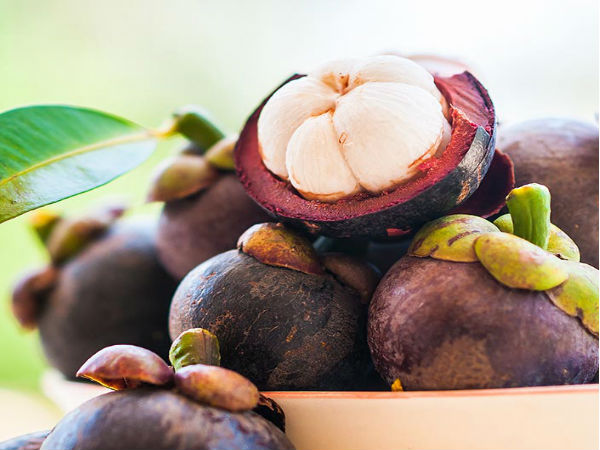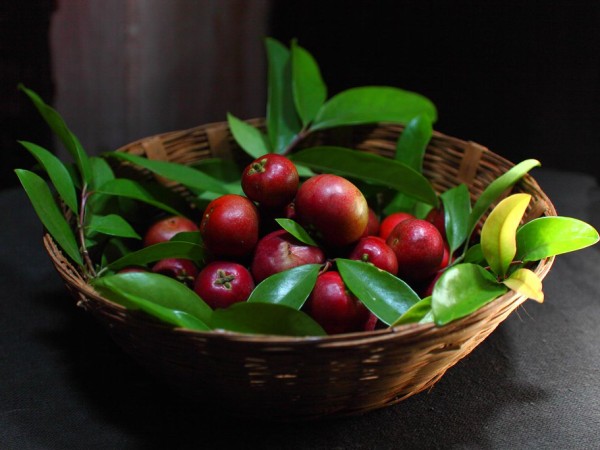Just In
- 2 hrs ago

- 3 hrs ago

- 4 hrs ago

- 11 hrs ago

Don't Miss
- Movies
 Veppam Kulir Mazhai OTT Release Date And Platform: When And Where To Watch Dhirav And Ismath Banu's Film
Veppam Kulir Mazhai OTT Release Date And Platform: When And Where To Watch Dhirav And Ismath Banu's Film - News
 Bengaluru Lok Sabha Election 2024 On April 26: What's Open And Closed?
Bengaluru Lok Sabha Election 2024 On April 26: What's Open And Closed? - Sports
 IPL 2024: RCB to Play 250th IPL Match Today - Records by Seasons, Win Percentage, Latest Stats So Far
IPL 2024: RCB to Play 250th IPL Match Today - Records by Seasons, Win Percentage, Latest Stats So Far - Finance
 JPMorgan CEO Jamie Dimon Hails PM Modi's Economic Reforms, Urges US to Follow Suit; Details
JPMorgan CEO Jamie Dimon Hails PM Modi's Economic Reforms, Urges US to Follow Suit; Details - Automobiles
 New Features Of The Ultraviolette F77 Mach 2: Uniting Performance, Safety, And Technology
New Features Of The Ultraviolette F77 Mach 2: Uniting Performance, Safety, And Technology - Education
 JEE Main Result 2024 Out, Telangana's 15 Toppers Shine, Check Statewise List of 56 Candidates with Perfect 100
JEE Main Result 2024 Out, Telangana's 15 Toppers Shine, Check Statewise List of 56 Candidates with Perfect 100 - Travel
 Escape to Kalimpong, Gangtok, and Darjeeling with IRCTC's Tour Package; Check Itinerary
Escape to Kalimpong, Gangtok, and Darjeeling with IRCTC's Tour Package; Check Itinerary - Technology
 OPPO Find X7 Ultra Camera Deep-Dive: Pushing the Boundaries of Photography on a Smartphone
OPPO Find X7 Ultra Camera Deep-Dive: Pushing the Boundaries of Photography on a Smartphone
What Is Kokum (Malabar Tamarind/Kudampuli): Its Benefits, Uses And Side Effects
If you belong to either the southern part of India or Goa, Maharashtra, Gujarat or even Assam, it is most likely that you are aware of and have eaten dishes containing kokum fruit.
Scientifically termed as Garcinia indica, Kokum offers culinary, pharmaceutical & industrial benefits. It has approximately 200 species found across Asia & Africa. In India, it is prevalent in the Western Ghats, Andaman and Nicobar Islands, and the north-east in the evergreen forests, riversides, or wastelands.
Regionally, Kokum is known as Kokum in Gujarat, Kokambi or Bheranda in Maharashtra/Goa, Kaatampi or Kudampuli in Kerala, Murgia or Punarpuli in Karnataka and Tintali in Orissa.

Kokum is an amazing fruit, providing numerous health benefits. It can be consumed as raw, in juice or sherbet form or sun-dried or powdered form. It is loaded with extraordinary health and medicinal advantages. Because of its sour taste, Kokum is extensively used in place of tamarind in recipes to enhance the overall flavour of vegetable curries, different kinds of fish curries, rasam, etc. it is also widely used in pickles or chutneys to increase the sour taste. A small quantity of Kokum is sufficient to increase the tanginess in any recipe.
This article will bring you some of the major health benefits, uses, and possible side effects of Kokum.
Health Benefits Of Kokum
1. Has Antioxidant Properties
Kokum is rich in antioxidants as well as anti-inflammatory substances. The presence of garcinol in Kokum enhances the immunity system of the body. It protects it from any cell damage. This minimizes the risk of many diseases, such as heart ailments and cancers, due to the anti-carcinogenic property of garcinol [1][2].
2. Packed With Nutrients
Kokum is packed with carbohydrates, acetic acid, vitamin Bs, potassium, manganese, citric acid, hydro citric acid, etc. Other beneficial nutrients can help improve your overall health [3].
3. Improves Digestion
Studies have shown that kokum extract has been used to manage various digestive problems, including constipation [4]. The kokum extracts are in their juice form are also known to relieve other gastric problems like indigestion and flatulence due to their anti-bacterial property. Taken along with salt and black pepper, kokum helps cure indigestion as well. Kokum is also a proven remedy for acidity.
4. Has Anti-Ageing Benefits
Kokum helps delay ageing due to its cell-repair and cell-regeneration properties. It enhances the overall texture of the skin.

5. Improves Hair Health
Kokum butter is great nourishment for the hair, as it improves the hair-growth and makes the hair soft, shiny, and easy to manage. In combination with hair oil, Kokum butter can be used as a hair mask and a hair conditioner after shampooing.
6. May Aid Weight Loss
The presence of HCA or hypocholesterolaemia agent helps in weight loss by controlling the conversion of calories into fat. This promotes weight loss, as well as helps stabilize the cholesterol-levels [5].
7. May Improve Brain Health
Regular intake of kokum can stimulate nerve cells' growth in the brain, thereby boosting the brain-function [6].
8. May Improve Menstrual Cycle
Packed with anti-inflammatory qualities, this fruit improves digestion and improves the menstrual cycle, curbing period pain and cramps.
9. May Ease Allergies
The topical application of the cold blend of kokum is a perfect remedy for skin allergies such as rashes [7].
Uses Of Kokum
Ayurveda: In Ayurveda, kokum butter can be used for treating cracked heels. It is also useful for rheumatoid aches, irregular menstruation, ear-infections, inflammation-related issues, etc.
Culinary: Kokum sherbet is a popular summer drink in Goa, Maharashtra, and other nearby states. Kokum has the same souring qualities as tamarind, especially enhancing coconut-based curries, dals, and vegetable dishes involving potatoes, okra, etc. It is also included in chutneys and pickles.
Side Effects Of Kokum
Owing to its numerous benefits, kokum is indeed a nutritious gift of nature to humankind. It can, however, result in certain side-effects if consumed in the wrong manner. Follow these tips to avoid the side-effects of kokum [8][9]:
- Individuals with severe skin allergy should avoid using kokum since it is beneficial mainly for mild skin-related issues.
- Kokum and milk products should not be consumed simultaneously. Since Kokum is sour, it can negatively affect the gut if taken with milk or milk products. The ideal gap between the consumption of kokum and milk should be a minimum of one hour.
- People suffering from high BP should avoid taking kokum in huge amounts, as it can cause high levels of acidity in the body [10].

How To Store Kokum
Kokum can be stored in an air-tight jar at room temperature to avoid moisture. And it will stay fresh for almost a year-long duration. It may be refrigerated, too, but it would need to be consumed within a week. Freezing is not recommended at all since it can adversely affect its taste and texture.
On A Final Note...
Kokum tree usually grows up to around 45-50 feet and bears a bright red fruit in colour, and has seeds inside it. Before the fruit is picked from the tree, it needs to be ripened fully into a dark purple and black colour. It has curved edges and is a sticky substance. It is usually halved and then dried before consumption. The freshness of the kokum can be determined by how dark the fruit looks.
-
 healthDo You Keep A Clove Of Garlic Under Pillow? Not To Keep Vampires At Bay, There May Be Scientific Reasons
healthDo You Keep A Clove Of Garlic Under Pillow? Not To Keep Vampires At Bay, There May Be Scientific Reasons -
 healthGet Your Groove On: 5 Health Benefits Of Dancing To Afro Beats
healthGet Your Groove On: 5 Health Benefits Of Dancing To Afro Beats -
 healthIndigenous Delicacies: 5 Rare Indian Wild Foods That Are So Healthy You Should Try It!
healthIndigenous Delicacies: 5 Rare Indian Wild Foods That Are So Healthy You Should Try It! -
 healthHaving Chicken Soup At Home Can Cure These Health Issues
healthHaving Chicken Soup At Home Can Cure These Health Issues -
 healthBoost Your Health with Beetroot: Health Benefits And Ways To Add The Colourful Veggie In Your Diet
healthBoost Your Health with Beetroot: Health Benefits And Ways To Add The Colourful Veggie In Your Diet -
 healthHealth Benefits Of Garam Masala: From Digestion To Weight Loss, Proper Use Can Yield Many Benefits
healthHealth Benefits Of Garam Masala: From Digestion To Weight Loss, Proper Use Can Yield Many Benefits -
 healthAyurvedic Wisdom: Panchamrit's Surprising Health Benefits
healthAyurvedic Wisdom: Panchamrit's Surprising Health Benefits -
 healthUnveiling the Power of Turmeric Ghee: An Ancient Ayurvedic Secret!
healthUnveiling the Power of Turmeric Ghee: An Ancient Ayurvedic Secret! -
 healthPlant-Based Diet And Nutrition: Your Key To A Stronger Immune System!
healthPlant-Based Diet And Nutrition: Your Key To A Stronger Immune System! -
 healthExperience the Healing Power of Indian Herbal Teas!
healthExperience the Healing Power of Indian Herbal Teas! -
 healthInternational Cat Day 2023: Did You Know That Cat Purring Can Benefit Your Health? Check Out How!
healthInternational Cat Day 2023: Did You Know That Cat Purring Can Benefit Your Health? Check Out How! -
 healthHeart-Healthy Breakfast: Discover The Benefits Of Frozen Strawberries
healthHeart-Healthy Breakfast: Discover The Benefits Of Frozen Strawberries


 Click it and Unblock the Notifications
Click it and Unblock the Notifications



